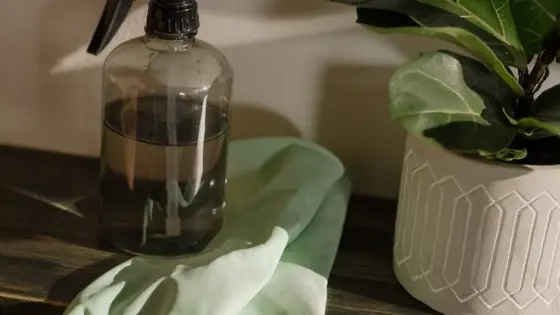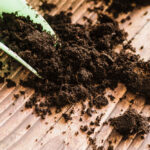In the plant world, neem oil is well-known for its ability to prevent insect infestations. Even if your plants are already infested with pests, Neem Oil can help. Neem oil is a highly efficient way of killing and removing a wide range of pests from your plants. Those pests won’t be around for long after you apply Neem Oil to your plants.
This article will cover all you need to know about Neem Oil. Even better, we’ll provide you with a formula for generating your very own Neem Oil combination at a cost that is far lower than what you’ll find in stores. We’ll go through the following topics:
- What exactly is Neem oil?
- How does Neem oil function?
- Can Neem oil be used on any plant?
- How can you create your own Neem Oil blend?
- What is the best way to apply Neem oil to your plants?
- Repetition helps
Neem oil is an excellent technique to avoid pests and treat your plant if bugs are already present. Let’s get down to the nitty-gritty of all you need to understand about it!
Read more: What you need to know about plant pot drainage holes
Table of Contents
What exactly is Neem oil?
Neem Oil is an all-natural essential oil that is extracted from the seeds of the neem tree. Although it is most commonly employed in the control of pests in vegetable and fruit crops, it has a wide range of other applications as well. Neem Oil is a useful tool for preventing and treating pest problems in houseplants, and you may use it for this purpose.
If you treat your houseplants with neem oil on a consistent basis, you will encounter very little difficulty with the majority of the different kinds of pests. You may use it to clean your plants and even sprinkle it on your soil if you have flies.
Read more: What Sort Of Fertilizer Is Best For Houseplants?
How does Neem oil function?
There are two distinct applications for neem oil. The first is suffocating or smothering the insects on your plants. This phase is only effective if the insects being dealt with are very tiny, such as spider mites. The compounds included in neem oil have a second purpose, which is to eliminate any insects that may be present. This will eliminate the larger as well as the tiny insects that are on your plants.
Azadirachtin, the chemical, impairs the insect’s regular biological activities, causing it to become dormant and die off gradually. It is a method that will not cause any harm to the plants you are trying to protect. When you apply neem oil to your plant, you will not cause it any harm in any manner. On the other side, you are making your plant highly undesirable to insects and other kinds of pests by doing this.
Neem Oil doesn’t work right away, so keep that in mind. It takes a few sessions and a few days before you start to get the effects you’re hoping for. Generally speaking, it takes approximately three to four days.
Read more: How To Apply Neem Oil To Your Plants?
Can Neem oil be used on any plant?
So, while Neem Oil is an excellent pesticide, can it be used on every plant? You can apply Neem Oil on most plants, however it will not be effective on plants with rough surfaces.
Neem Oil will not be effective on your plants if they have hair, needles, or any other feature that enables pests to escape the oil by crawling deeper into the leaves of the plant. Neem Oil should not be used to fuzzy-leaved plants like most calatheas, as well as other types of plants that have fuzzy leaves.
How can you create your own Neem Oil blend?
Following up on what we said at the beginning, here is a recipe that will walk you through the process of creating a Neem Oil combination on the cheap. Neem Oil is available at gardening stores in spray bottles containing some form of Neem Oil blend.
You may buy readymade combinations if you like, but you can also make it yourself for far less money. You’ll need the following things to create it yourself:
- 100% Pure Neem Oil (cold pressed and unfiltered)
- A bottle of spray
- Warm water
- Dish soap
The raw Neem Oil collected from a Neem tree is the 100 percent Neem Oil. The readymade bottles sold in gardening stores may not always include the same Neem Oil blend, but they do contain additional substances, like alcohol. It is completely safe for you to apply this on your plants; however, we will not be adding any more chemicals to our combination.
Start by putting warm water in your spray bottle. Following that, add 0.5 teaspoon of Neem Oil and a few drops of dish soap (3-4 drops). Close the spray bottle’s lid and shake it well. In this way, the soap, water, and Neem Oil in the spray container are more effectively mixed together.
You may begin spraying your plants once you have given the spray container a good shake. Before you use your spray bottle for any purpose, always give it a good shake to get the contents mixed together. Because it is an oil, Neem Oil does not mix well with water; in fact, it will float on top of it. Water and oil do not get along very well.
Read more: Can You Take A Houseplant Outdoors?
How should you use Neem oil on your plants?
This step assumes you have a combination of water and Neem Oil, as created in the previous section. You might also use the combination that you purchased from the shop for this step. Neem Oil may be applied to your plants in a variety of different methods, including the following:
- Fill a spray bottle with Neem Oil and sprinkle your plants.
- Wipe down your plant with Neem Oil mixed with water and soap.
- Remove bugs using a Q-Tip soaked in your Neem Oil water combination.
Because it is an oil, Neem Oil is more viscous than water and does not combine particularly well with it. When combining these two ingredients, make sure the water you’re using is hot before beginning the mixing process. Because of this, combining these two is made considerably simpler.
Before you use the mixture, give the spray bottle containing the water, Neem Oil, and soap a good shake to ensure that the ingredients have been thoroughly combined. All three of these approaches have their upsides and downsides, so let’s go through them.
Read more: What Exactly Is Leca, And Why Is It Beneficial To Plants?
Your plants should be misted.
By far the easiest way to apply Neem Oil to your plants in order to combat the pest is to mist them. However, by spraying your plant, you may overlook some locations. This is OK if the pests on your plant are not prevalent.
In the event that the pest is active, missing places on your plant will require you to spray it many times in order to ensure that you have removed everything. If the bug is really active and extensive, wiping your plant can be a more effective approach.
Cleaning your plants
Wipe down your plant with the Neem Oil and soap combination using a microfiber cloth or cotton ball if you want to be thorough and make sure you’re not missing any portions. Depending on the size of your plant, thoroughly wiping it off takes a lot more time.
Q-Tips are useful for removing pests.
When you are dealing with spider mites, you may eliminate these pests from your plant by dipping a Q-tip in a combination of neem oil and water, and then wiping the Q-tip on a paper towel. You may prevent the insect from returning to the area by putting a mark on it using the Q-tip that has been dipped in the Neem Oil combination. When you use this technique, you will not only get rid of the pests you are contacting with your Q-tip, but you will also kill them.
Read more: Houseplants Growing Medium
Repetition helps
Because Neem Oil takes some time to take effect, you will need to clean and spray your plants many times over the course of several consecutive days. If your plants don’t have any pests right now and you’re using Neem Oil to keep them free of pests, you can spray them once a week to keep them safe from any future pests or infestations.
If you are the type of person that cleans your plants on a regular basis anyway, now is an excellent time to spray them with the Neem Oil combination that you have prepared before cleaning your plant. Your plant will not only have an attractive appearance, but it will also be protected from any pests that could wish to make your plant or its environment their home.
I appreciate you taking the time to read my article. I really hope that this information is of use to you in maintaining the health and beauty of your plants.
Read more: What Exactly Is Vermiculite, And How May It Be Used With Houseplants?
Frequently Asked Questions
What is Neem oil?
Neem Oil is an all-natural essential oil that is extracted from the seeds of the neem tree. Although it is most commonly used in vegetable and fruit gardens to repel insects and other pests, it has a wide range of other applications as well.
Does Neem Oil smell bad?
Neem Oil has a strong aroma that chases away bugs. It smells like garlic and nuts mixed together. This may be an unpleasant odor to some, but a pleasant odor to others.
Can you use Neem oil on any plant?
Neem Oil may be applied to the majority of plants, however it will not be as effective on those plants that have rough or uneven surfaces. Neem Oil will not be effective on your plants if they have hair, needles, or any other feature that enables pests to escape the oil by crawling deeper into the leaves of the plant.
How do you make your own Neem Oil mixture?
Fill your spray container with warm water, add 0.5 teaspoon of Neem Oil, and a few drops of dish soap, and shake well (3-4 drops). Close the spray bottle’s lid and shake it well.
How do you apply Neem oil to your plants?
Neem Oil can be applied to your plants in a number of different ways: you can put some Neem Oil in a spray bottle and use that to mist your plants, you can put some Neem Oil in a bowl with some water and soap and use that to wipe off your plants, or you can use a Q-tip dipped in your Neem Oil water mix to remove pests from your plants.
Photo by cottonbro: https://www.pexels.com/photo/black-and-white-spray-bottle-4107120/


